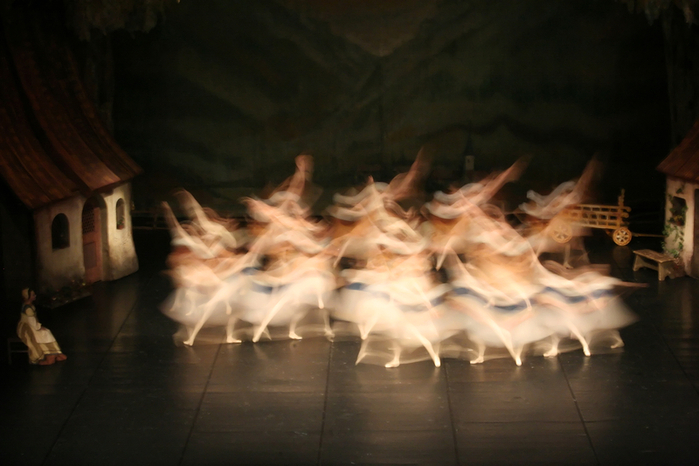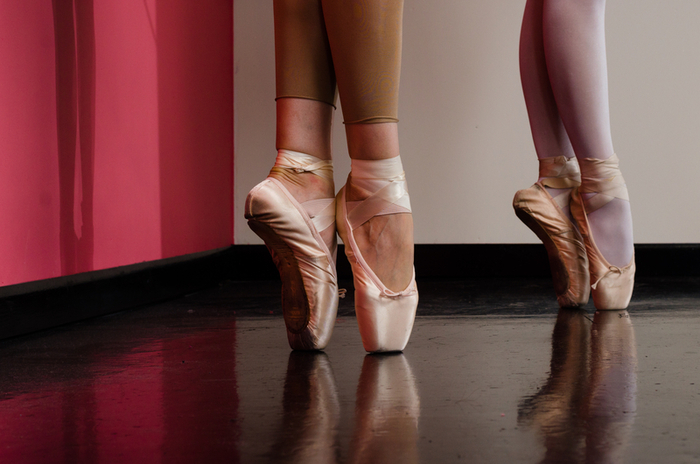- Calls to this hotline are currently being directed to Within Health, Fay or Eating Disorder Solutions
- Representatives are standing by 24/7 to help answer your questions
- All calls are confidential and HIPAA compliant
- There is no obligation or cost to call
- Eating Disorder Hope does not receive any commissions or fees dependent upon which provider you select
- Additional treatment providers are located on our directory or samhsa.gov
Treating an Eating Disorder Using Dance Movement Therapy
The diversity of factors that contribute to eating disorders means that diverse methods are often effective in treating them. Individuals undoubtedly benefit from individual process therapy, however, this alone is often too limiting to address all areas of eating disorder beliefs and behaviors.
Experiential therapies use expressive tools and activities to allow individuals to explore their creativity, emotions, physical experience, and interactions beyond traditional talk therapy. Dance movement therapy is an experiential therapy that is a valuable addition to traditional eating disorder treatment.
What is Dance Therapy?
According to the American Dance Therapy Association (ADTA), dance therapy modalities and ideologies have been around since at least the 1940’s. The ADTA defines dance movement therapy (DMT) as “the psychotherapeutic use of movement to promote emotional, social, cognitive, and physical integration of the individual, for the purpose of improving health and well-being [1].”
Dance Movement Therapy can look very different depending on the instructor as well as the individuals being treated, allowing this therapy to become tailored to make it more effective. Even so, ADTA specifies that all DMT is based on these foundational premises:
- “Movement is a language, our first language. Nonverbal and movement communication begins in utero and continues throughout the lifespan. Dance/movement therapists believe that nonverbal language is as important as verbal language and use both forms of communication in the therapeutic process.
- Mind, body, and spirit are interconnected.
- Movement can be functional, communicative, developmental, and expressive. Dance/movement therapists observe, assess, and intervene by looking at movement, through these lenses, as it emerges in the therapeutic relationship in the therapeutic session.
- Movement is both an assessment tool and a primary mode of intervention [1].”

How Does Dance Therapy Work?
DMT sessions can focus on numerous emotional, physical, social, and psychological processes and might involve themes of learning to be present with the body, engaging in mindful and slow movement, coping with symptoms of depression, anxiety, or PTSD using movement, processing psychological experiences through movement metaphors, communicating using the body, or building a more empowered relationship to the body through movement, to name a few. What this looks like can vary wildly depending on the instructor as well as the individual being treated and the meaning for the therapy.
The Creative Change process is a 4-step process including the following:
- Preparation: “Gathering information and materials, identifying sources of inspiration, and acquiring knowledge about the project or problem at hand. This is often an internal process (thinking deeply to generate and engage with ideas) as well as an external one (going out into the world to gather the necessary data, resources, materials, and expertise) [2].
- Incubation: “the ideas and information gathered in stage 1 marinate in the mind. As ideas slowly simmer, the work deepens and new connections are formed. During this period of germination, the artist takes their focus off the problem and allows the mind to rest. While the conscious mind wanders, the unconscious engages in what Einstein called “combinatory play”: taking diverse ideas and influences and finding new ways to bring them together [2].”
- Illumination: “After a period of incubation, insights arise from the deeper layers of the mind and break through to conscious awareness, often in a dramatic way [2].” This illumination might occur in the session or hours, days, or weeks later as the concepts learned in DMT continue to marinate.
- Verification: This is the application of the insights gained during “illumination.” The artist uses critical thinking and aesthetic judgment skills to hone and refine the work and then communicate its value to others [2].”
Dance Movement Therapy Techniques
The wide application and flexibility of DMT is what allows it to be so effective for so many differing groups. It is difficult to pinpoint specific techniques due to this variance, however, one study does specify that DMT sessions often involve two key components:
- “The ‘movement metaphor’ as the central tool.
- A creative change process within which this tool is used [2].”
Essentially, a Dance Movement Therapist would first provide the Preparation step discussed above via exploration of the movement metaphor of that session. Then, the Therapist would use movement and dance to support the individual in experiencing the rest of the Creative Change Process through this movement metaphor tool. This allows flexibility of themes mentioned above as the movement metaphor being used can vary depending on the current theme, instructor, population, as well as the individual’s unique experience of the movement.
Benefits of Dance Movement Therapy for Eating Disorders
Dance Movement Therapy is incredibly beneficial for those with eating disorders for many reasons. As the ADTA specifies, “DMT provides a way to safely become more aware of feelings that arise from the body’s sensations, and teaches people with eating disorders how to listen to their body’s needs [1].” Additionally,the focus on relationships and connection with others in DMT “helps the individual risk connecting to others in supported, honest and meaningful ways [1].” Finally, the ADTA specifies that “DMT helps people understand how their feelings are given form through their actions, and empowers them to take risks. Healing cannot fully take place unless they are able to challenge themselves to live in their bodies, a central component of their body image. DMT provides a structure so that this can occur [1].”
Dance Movement Therapy is a helpful way of allowing individuals that struggle with verbal processing or communication to process using the physical. Individuals can then connect their physical experience with metaphors to their daily life, struggles, and eating disorder beliefs and behaviors.
Limitations of Dance Movement Therapy
The biggest limitation of Dance Movement Therapy is often the challenge that exists in connecting the physical with the psychological. The process between illumination and verification is similar to that of gaining insight and then putting that insight toward action or behavioral change. In DMT, it might be difficult for an individual to apply any “aha” dance movement moments to change in their daily life. For this reason, it is an important part of a Dance Movement Therapist’s job to support this process as opposed to only leading individuals to insight.
Additionally, Dance Movement Therapy can take time as the creative change process mentioned above is not an automatic or short process. As such, consistency of attendance is important. One Dance Movement Therapy class is less likely to instill long-term insight and change.
Dance Movement Therapy is one of many experiential therapies that is used in hospitals and treatment centers worldwide to support eating disorder recovery.

Articles on Eating Disorder Treatment Therapies
- Effective Eating Disorder Therapy
- Acceptance Commitment Therapy (ACT)
- Cognitive Behavioral Therapy (CBT)
- Dialectical Behavioral Therapy (DBT)
- Exposure Response Prevention Therapy (ERP)
- Eye Movement Desensitization Reprocessing (EMDR)
- Interpersonal Psychotherapy (IPT)
- Family-Based Therapy
- Maudsley Method
- Medical Nutrition Therapy (MNT)
- Somatic Experiencing
- Art Therapy
- Equine Therapy
- Stand Up Paddle Board Yoga
Resources
[1] Unknown (2020). What is danc/emovement therapy? American Dance Therapy Association. Retrieved from https://adta.memberclicks.net/what-is-dancemovement-therapy. [2] Gregoire, C. (2019). Understanding the four stages of the creative process. WeWork. Retrieved from https://www.wework.com/ideas/professional-development/creativity-culture/understanding-the-four-stages-of-the-creative-process. [3] Meekums, B., Karkou, V., Nelson, E. A. (2015). Dance movement therapy for depression. Cochrane Database of Systematic Reviews, 2. [3] Unknown (2021). Dance/movement therapy and eating disorders. American Dance Therapy Association. Retrieved from https://www.adta.org/assets/docs/DMT-with-Eating-Disorders.pdf.Author: Margot Rittenhouse, MS, LPC, NCC
Page Last Reviewed on February 25, 2022 and Updated By: Jacquelyn Ekern, MS, LPC

